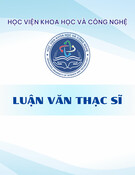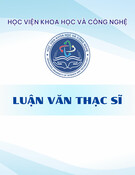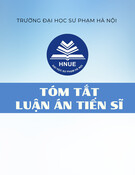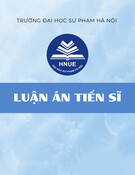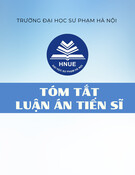
1
INTRODUCTION
1. Preface
Fisheries management policy is increasingly focused on protecting
ecosystems and individual fish resource groups. The first idea of
ecosystem-based fisheries management was mentioned in the
Stockholm Declaration in 1972, but until 2003 the FAO officially
published a publication dealing with the ecosystem approach in The
Ecosystem Approach to Fisheries (EAF) or the Ecosystem-Based
Fishery Management (EBFM). This is a new approach and effective way
of management. One of the concepts put into use is the ecological -
connectivity. Sheaves (2009) defines ecological - connectivity as the
movement of organisms from one habitat to another by the seasonal to
complete their life cycle. With an ecosystem-based fisheries
management approach, understanding the ecological - connectivity of
the important fish resource will enhance ecosystem management and,
at the same time, emphasize that in a marine protected area It is
necessarily includes many of the inhabitants.
Vietnam coastal has the distribution of tropical ecosystems such as
coral reefs, mangrove forests and seagrass beds. Like many other
countries in the world, the deterioration of ecosystems and the
deterioration of coastal resources have been occurring at fast pace in
many places over the last few decades. This is due to overexploitation
and lack of understanding of marine ecosystems as well as concern for
immediate benefits without paying attention to long-term ecological
consequences. There have been many studies of fisheries resources in
coastal ecosystems as a basis for proposing management solutions, but
studies often focus on the fishing industry structure, productivity,
groups of main species and the change of resources under human
impact. In recent years, there have been some marine areas that have
applied ecosystem-based fishery management approaches such as Phu
Quoc or some coastal habitats in the South China Sea, but this approach
is still unexplored. There is still a lack of scientific basis, especially the
data on ecological - connectivity . Therefore, many of the current
fisheries management documents is only focus on the size of the fish,
the size of the net or harvesting season. There are almost no clear,






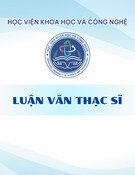
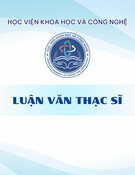
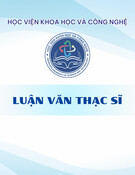
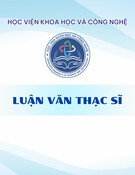
![Luận văn Thạc sĩ: Tổng hợp và đánh giá hoạt tính chống ung thư của hợp phần lai chứa phần tetrahydro-beta-carboline và imidazo[1,5-a]pyridine](https://cdn.tailieu.vn/images/document/thumbnail/2025/20250816/vijiraiya/135x160/26811755333398.jpg)
